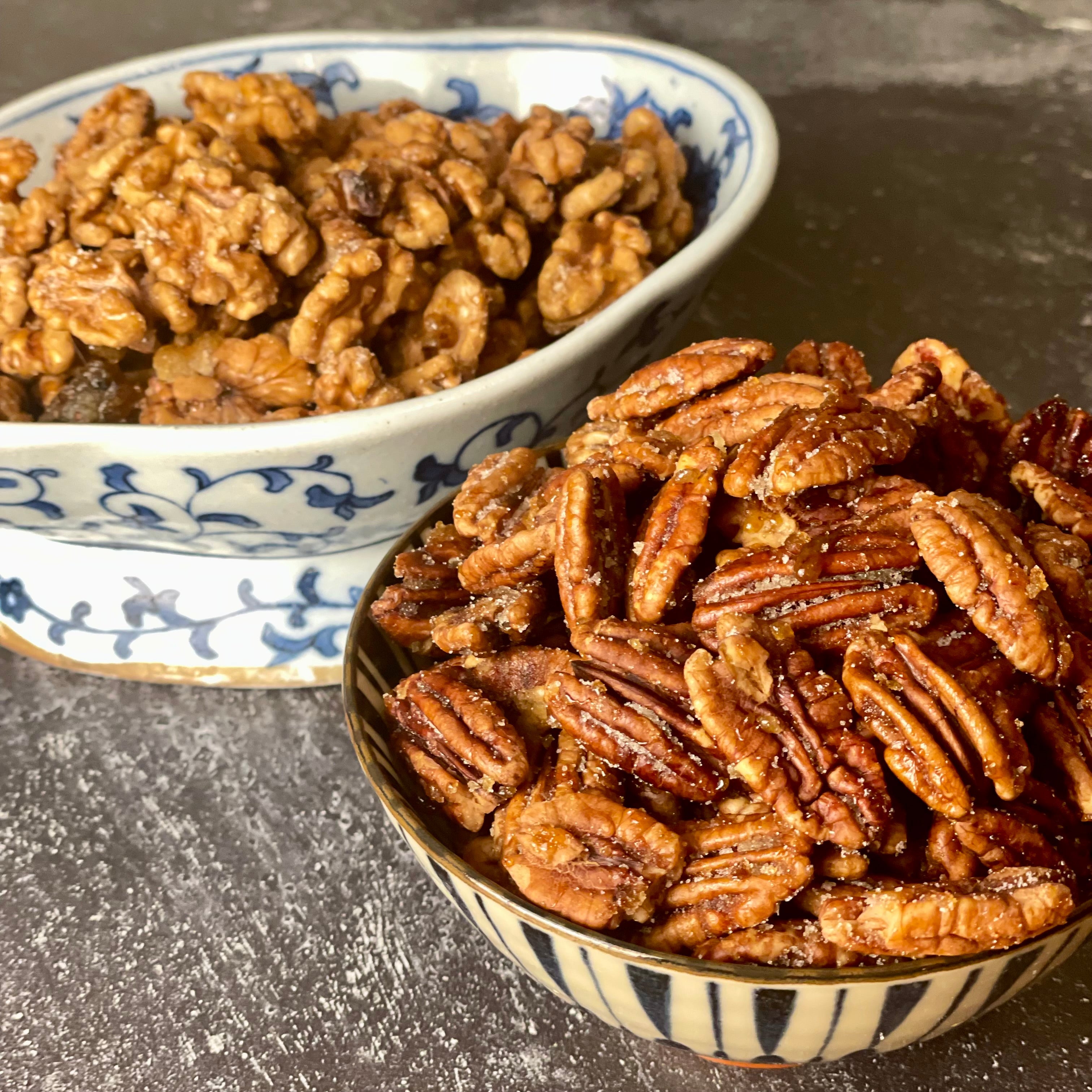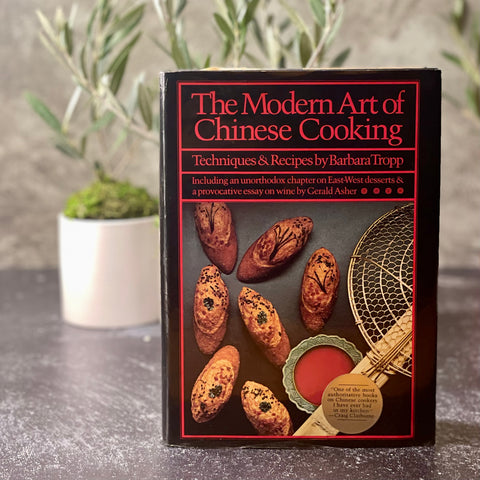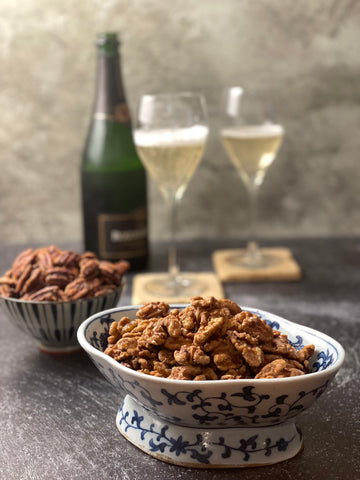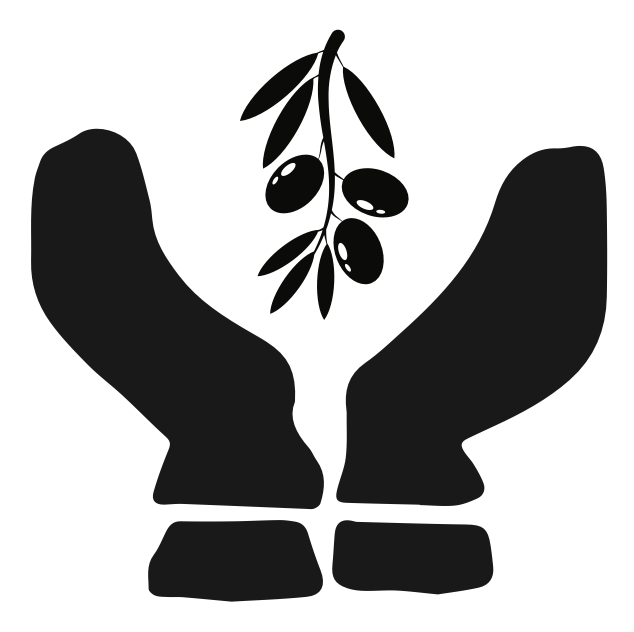
Fired Dried Walnuts & Pecans
In 1982 a scholar in Chinese literature from New Jersey astounded the cooking world with her delightful 623 page hardback book, The Modern Art of Chinese Cooking. Going beyond mere technique, Barbara Tropp infused her writing with the philosophy and poetry of Chinese culture along with an explanation of traditional and modern ingredients.
I had the good fortune to be her assistant for two cooking classes at the John A. Brown Kitchenware store in Oakland that year, where I was the store manager. Later, when she opened China Moon Café in San Francisco in a 1930s era former coffee shop near the original Williams-Sonoma Flagship store on Sutter Street, I enjoyed lunch there as I was working at WS corporate at the time. It's always special when the chef stops by your table in front of business associates to greet you in person!
A soft-spoken, petite caucasian woman who spoke, read, and wrote in Chinese, she regaled us with the story of shopping for produce in SF Chinatown and listening to disparaging remarks about her being there, then remarking to those same ladies (with evident delight in flawless Mandarin), "Yes, and some of us even understand what you're saying about us".
I have been thinking of Barbara a lot lately, and note that we met 41 years ago this month. [Here's the book she signed for me to give to Donald as a gift]. Sadly, we lost her 22 years ago, also in the autumn.


Donald and I used to make her Fire Dried Walnuts (pp 105-106) quite often for guests, and have adapted it here to substitute Lucero Arbequina EVOO for corn or peanut oil and offer a variant using Tingly Sichuan Salt, a collaboration between Jacobsen Salt Company and Fly by Jing. Barbara suggests that this recipe works equally well with pecans, so we've prepared that recipe with the Arbequina substitute and Jacobsen's Pure Kosher Sea Salt.
I hope you enjoy this technique with its two recipe variations. Barbara attributes the original to her literary friend and mentor James Lo, as an example of a Hunanese "little dish" to start a meal. In her own words:
"These nuts have a beguiling texture and an irresistible gloss of caramelized salt and sugar that make them almost universal favorites. These are not the heavily candied walnuts one finds in Hunanese restaurants. Rather, they are refined, elegant sweetmeats, just perfect for greeting guests. You may soak and dry the nuts days in advance, but to serve them warm and freshly caramelized is the ultimate seduction."






